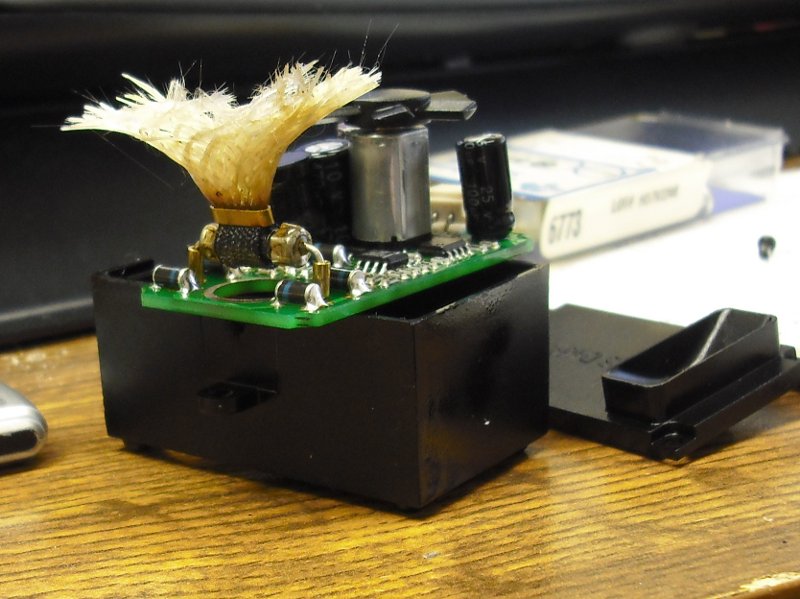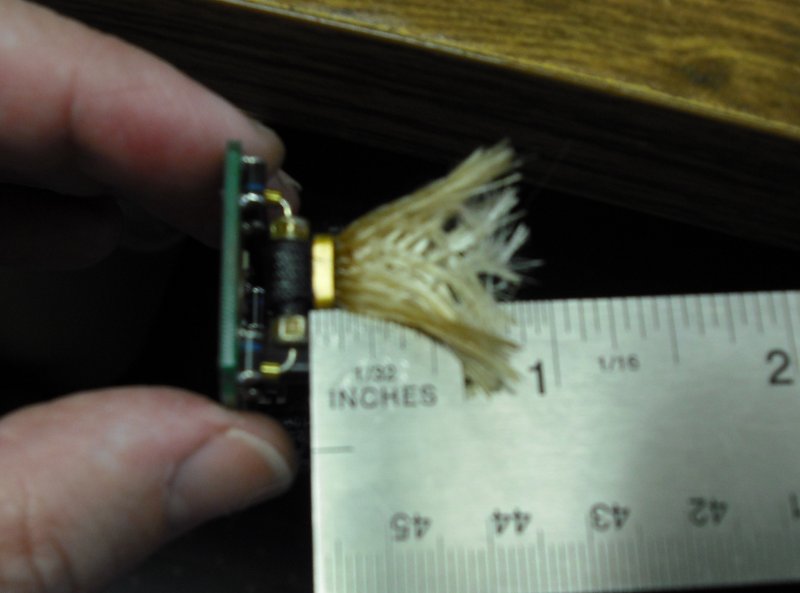I had a chance a couple weeks ago to bend Navin’s ear, so I asked him about my annoying smoke unit. Symptom: Sometimes it works beautifully. Runs 45 minutes or more and turns off till I add fluid and reset it. Sometimes. Sometimes it runs only 10 minutes or so, then turns off. I reset it and it turns off. I reset it and it turns off. “Is it out of fluid?” “Eww, there’s fluid dripping out the bottom of the loco.” Sometimes I can’t get the smoke unit empty, so it pours out in the box. The loco practically swims in it. I’ve found over time that smoke fluid dissolves CA glue, red locktite and paint.

“How long is the wick? Some were made way too long.” Navin said. He rather griped about it. “Pretty long. You kindof have to stuff it in.” “Oh. It should only be 1/2 an inch.” “You mean 1/2 inch below the element?” “Yes. It should just reach the bottom and spread a little bit.” So I took it apart.


Below the element, or below the brass ring? I measured 1/2 inch from the brass ring 'cause it’s easier to cut more off than to grow some more. I’ll spare you the painful and traumatic surgery photos. Does it work? I dunno. I have a train show all weekend, so I’ll let you know.